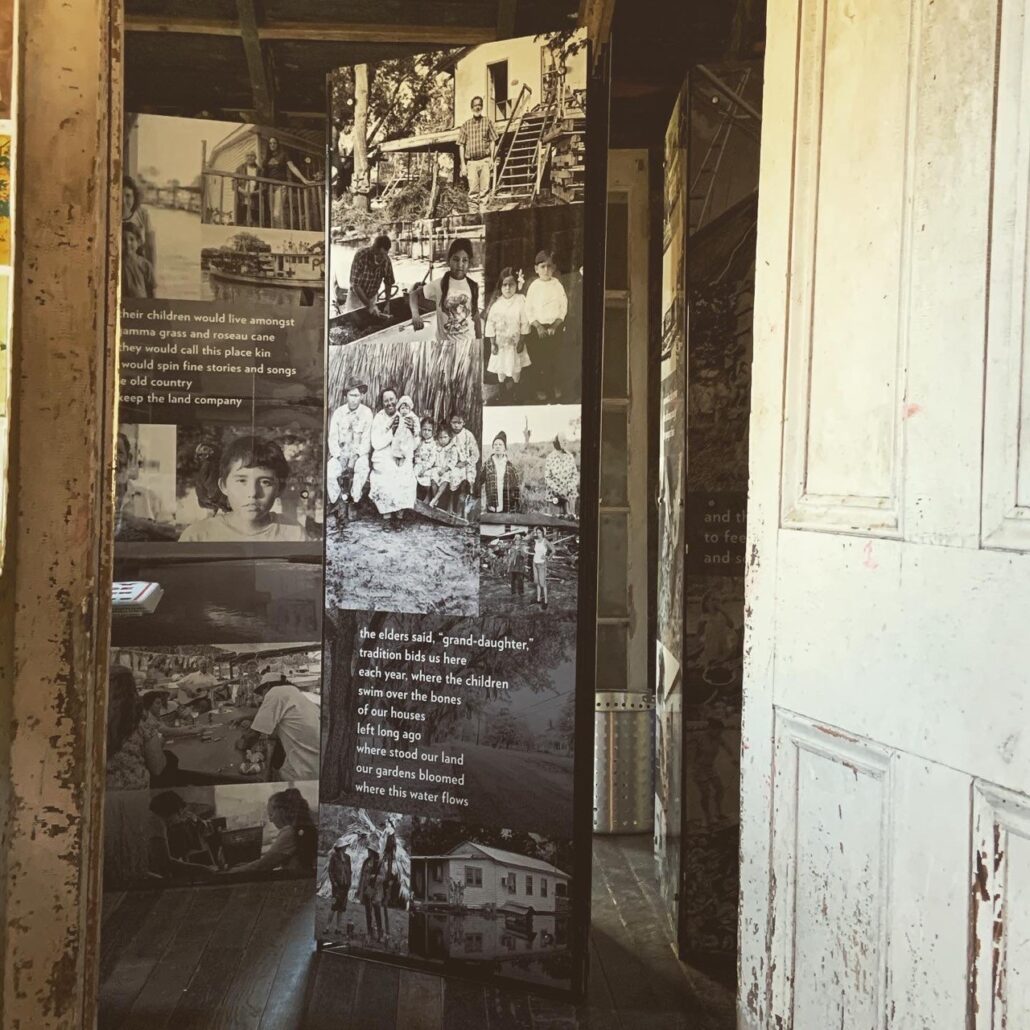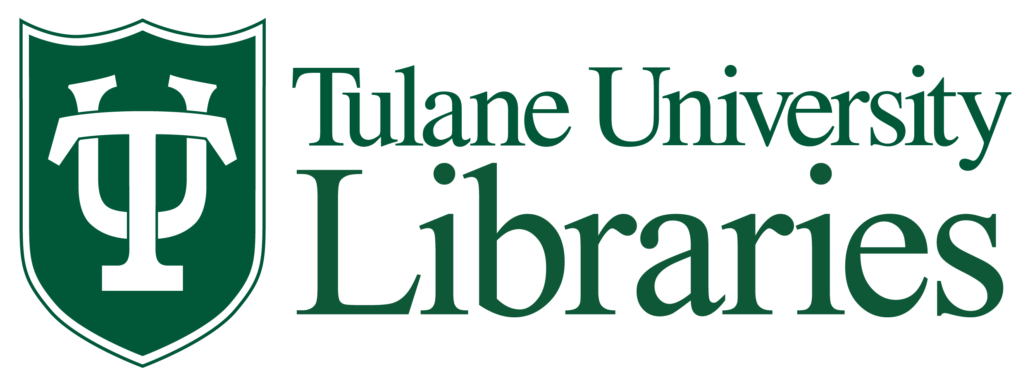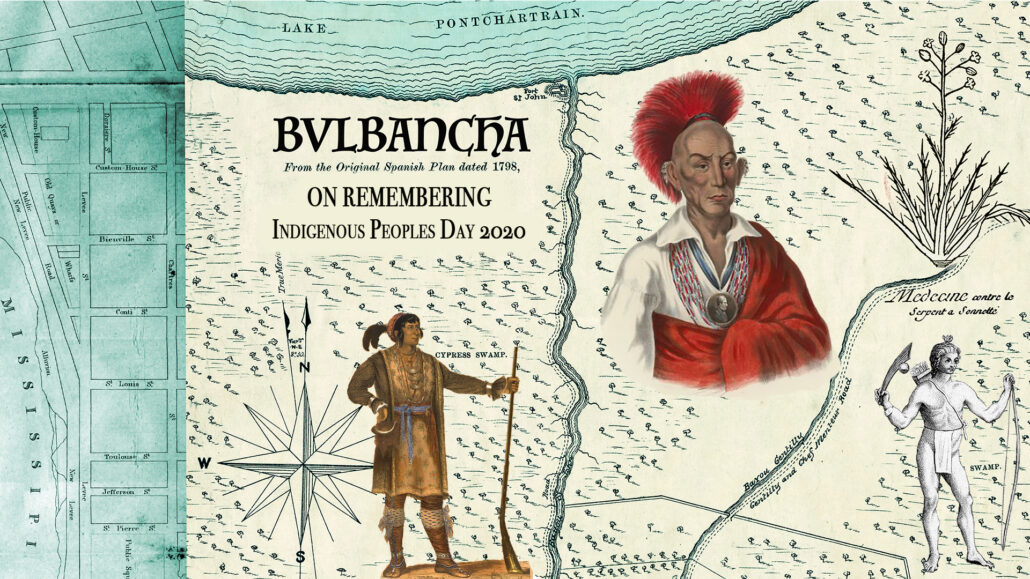Monique Verdin: Return to Yakni Chitto

Return to Yakni Chitto explores the complex interconnectedness of environment, economics, culture, climate and change in the Mississippi River Deltas’ indigenous Houma Nation. Telling an autobiographical story of ancestral migration and community resilience in the face of environmental and social injustice, this installation, curated by Michel Varisco, features a collage of photographs by Monique Verdin and text by poet Raymond “Moose” Jackson.
“Yakni Chitto” is the indigenous Mobilian Trade Language name for “Big Country.” These words geographically refer to the quickly disappearing swampland between the Mississippi and Atchafalaya rivers – land which has remained unceded by its native inhabitants for more than 300 years. Inspired by the narratives and historic photos of her great grandmother Celestine Verdin‘s family home in Point-aux-Chenes, in present day Terrebonne Parish just north of Isle de Jean Charles – Verdin’s work pays homage the ways of life preserved by the Houma diaspora throughout the Gulf South.
The exhibit is produced by the Neighborhood Story Project and the Department of Anthropology & Sociology at University of New Orleans and presented at Tulane in partnership with Newcomb Art Museum and the New Orleans Center for the Gulf South with special thanks to the Tulane University Libraries.
Monique Verdin is an interdisciplinary storyteller who documents the complex relationship between environment, culture, and climate in southeast Louisiana. She is a citizen of the Houma Nation, director of the Land Memory Bank & Seed Exchange and a member of the Another Gulf Is Possible Collaborative, working to envision just economies, vibrant communities, and sustainable ecologies. She is co-producer of the documentary My Louisiana Love and her work has been included in a variety of environmentally inspired projects, including the multiplatform performance Cry You One, Unfathomable City: A New Orleans Atlas, and the collaborative book Return to Yakni Chitto : Houma Migrations.
About the Exhibition
Commissioned by
the Neighborhood Story Project and the Department of Anthropology & Sociology at University of New Orleans
Events
About the Partners
The New Orleans Center for the Gulf South at Tulane University (NOCGS) is an interdisciplinary, place-based institute that was founded in 2011 and is now a cornerstone of the School of Liberal Arts. NOCGS is dedicated to preserving, perpetuating, and celebrating the distinctive cultures of New Orleans and the Gulf South, identified as the bioregion stretching from Florida to Texas. Its focus is not only on the coastal states, but is international as well, exploring areas of Latin America, the Caribbean, and Africa that have ties to the region and have influenced its distinctive history and traditions, as well as other delta city and coastal wetland areas around the world that share geographical traits. The Center’s mission rests on three pillars: research, teaching, and community engagement. All of our programming is based on the belief that the more we understand where we are, the more fully we can engage in our democracy and collective destiny.
The Neighborhood Story Project is located in an old corner store building in the Seventh Ward of New Orleans. In partnership with the University of New Orleans, since 2004 we have worked with public schools, grassroots organizations, community-based museums, and other important cultural institutions to create books, exhibits, events, and courses that explore how individual life histories are connected to the broader cultural and historical dynamics of the city and the world. We believe in the power of cross-cultural conversations and co-creativity to build on the strengths of our communities.






